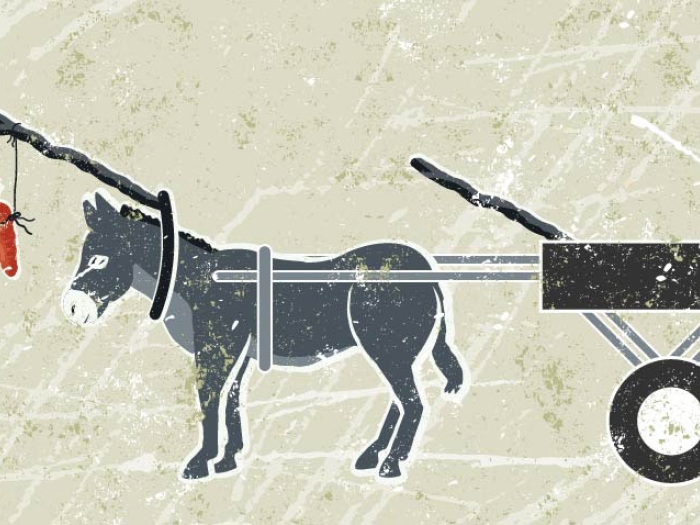An analysis of 2022 data shows that despite worries, use of unneeded scans and tests didn’t rise at primary care practices that embraced virtual care most
11:11 AM
Author |

Before 2024 ends, Congress will decide whether to keep or change rules about telehealth, or let them expire.
And even though the decision will focus on Medicare’s payment for virtual patient care, it will likely impact telehealth access for people with other kinds of health insurance too.
Now, a University of Michigan study suggests that policymakers can rest easier about one of the top worries regarding telehealth, which is that virtual care will drive up the use of tests and scans that patients don’t need, wasting money and resources.
In fact, the study shows that low-value care didn’t rise faster at primary care practices that used telehealth the most, compared with those that used it the least.
And in some cases, the high-telehealth-use practices saw a faster drop in low-value care.
The study, published in JAMA Network Open, focused on eight low-value tests, scans and procedures that experts agree aren’t needed in certain groups of patients.
This included blood tests to screen for prostate cancer risk in men over age 75, CT scans for people with uncomplicated sinus infections or back pain, Pap smears to look for early signs of cervical cancer in women over age 65, and colon cancer screening in people over age 85.
While some have worried that such low-value care might rise when physicians and other providers see more patients virtually and can’t conduct physical exams, the study showed this did not happen.
“Our findings are reassuring in the context of current telehealth policy decisions, because there has been concern that telehealth might be increasing access to care to a degree that leads to unnecessary visits and wasteful screening or diagnostic testing,” said lead author Terrence Liu, M.D., M.S., a primary care physician in the Division of General Medicine at U-M Health and National Clinician Scholar at the U-M Institute for Healthcare Policy and Innovation.
He and his colleagues used data from nearly 578,000 Michiganders covered by traditional Medicare, who saw providers in more than 2,550 primary care clinics between 2019 and 2022.
The researchers divided those clinics into three groups of high, medium and low telehealth use based on how frequently they billed Medicare for virtual care visits by video, phone and other virtual care services in 2022.
They also accounted for differences in the number of patients each clinic saw.
In addition to failing to show a rise in low-value care at high-telehealth practices, the study also confirms an earlier U-M finding using data from 2021.
That study addressed another fear about virtual care: that the rate of in-person visits would increase because of a need for follow-up appointments to address something identified in virtual visits.
In both that study and the new one using data from 2022, the rate of in-person visits decreased in the telehealth era.
Liu and colleagues zeroed in on the eight low-value care types because they’ve been studied by others and have been targeted for reduction by major medical professional societies.
In six of the eight types of care, the rate of patients receiving them dropped or stayed about the same between 2019 and 2022, no matter how much telehealth a clinic provided.
We need to find ways to best integrate telehealth into our current healthcare delivery system and think of how to reduce low-value care in both the in-person and virtual setting."
-Terrence Liu, M.D., M.S.
But in two cases – cervical cancer screening for women over 65, and ongoing blood monitoring for a thyroid hormone in people with hypothyroidism – the medium- and high-telehealth clinics showed an even faster drop than the low telehealth clinics.
The study focuses on types of low-value care that occurs most commonly in the primary care setting, using well-established methods for identifying low-value care in Medicare records.
It took into account the trend in recent years for an increasing percentage of older adults to choose Medicare Advantage rather than traditional Medicare.
While the study focuses on data from Michigan that the team obtained from the Michigan Value Collaborative, Liu and colleagues now plan to repeat the analysis using a sample of national Medicare data.
Liu worked on the study with senior author Chad Ellimoottil, M.D., M.S., who directs virtual care for the U-M Medical School’s faculty group practice, called the Michigan Medical Group.
A. Mark Fendrick, M.D., the director of the U-M Center for Value Based Insurance Design, is a co-author.
“I view telehealth as a way to supplement providers’ usual ways of delivering care, and wouldn’t expect it to necessarily improve health care quality or decrease cost by reducing low-value care on its own,” said Liu.
“We need to find ways to best integrate telehealth into our current healthcare delivery system and think of how to reduce low-value care in both the in-person and virtual setting.”
“These important findings suggest that regardless of whether initial care recommendations are made in person or virtually, factors such as access to care, out of pocket costs and the time and effort required by patients to complete both high and low-value medical services play an important role in their use,” said Fendrick.
Additional authors: Liu, Ellimoottil, Fendrick and co-authors Michael Thompson, Ph.D., Chiang-Hua Chang, Ph.D., and Jeffrey McCullough, Ph.D. are all members of the U-M Institute for Healthcare Policy and Innovation.
Paper cited: “Primary care practice telehealth use and low-value care services,” JAMA Network Open. DOI:10.1001/jamanetworkopen.2024.45436
Sign up for Health Lab newsletters today. Get medical tips from top experts and learn about new scientific discoveries every week.
Sign up for the Health Lab Podcast. Add us wherever you listen to your favorite shows.

Explore a variety of health care news & stories by visiting the Health Lab home page for more articles.

Department of Communication at Michigan Medicine

Professor


Want top health & research news weekly? Sign up for Health Lab’s newsletters today!





